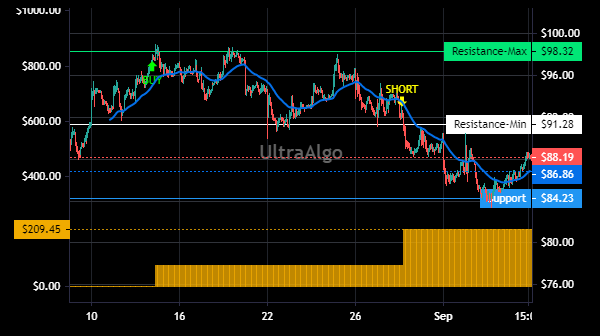

Monte Carlo methods (or Monte Carlo experiments) are a broad class of computational algorithms that rely on repeated random sampling to obtain numerical results i.e., by running simulations many times over in order to calculate those same probabilities heuristically just like actually playing and recording your results in a real casino situation: hence the name.īut where did the name come from? Monte Carlo is a region in the tiny principality of Monaco famed for its casino. Here’s what Wikipedia has to say on the matter: Remember: our definition of probability is “long-run relative frequency.” If we repeat an experiment (like flipping a coin) a large number of times and tabulate the outcomes, the relative frequencies will “converge,” in a sense that will be made clearer later in the semester, to the probabilities of each outcome. How did we simulate the dice roll? The RANDBET function allowed us to do just that! Once we set up the function for 1 pair of dice, we easily copied and pasted it 499 more times to simulate 500 times.Roughly speaking, Monte Carlo Simulation means using a computer to repeatedly carry out a random experiment and keeping track of the outcomes. We simulate random dice rolls 500 times and then make a note in the third column every time a pair of the same numbers is achieved! In the blue table to the right, we notice that indeed the observed probability is very close to our calculated probability of 1/6. In our spreadsheet below, we have two dice (an orange and a black one). So, the probability of rolling any pair can be computed as the sum of 1/36 + 1/36 + 1/36 + 1/36 +1/36 + 1/36 = 6/36 = 1/6.ĭoes this really hold true? If we rolled the dice a very large number of time, can we expect this outcome would occur 1/6 time in the long run? Let’s use spreadsheets to find out! This probability of both dice rolling a 2 or 3 or 4 or 5 or 6 is also 1/36. As such, the probability of both dice (dice 1 and Dice 2) rolling a 1 is 1/36, calculated as 1/6 x 1/6. The probability of Dice 2 rolling a 1 is also 1/6.

The probability of Dice 1 rolling a 1 is 1/6. As such, the probability of rolling a pair of the same numbers is 6 x 1/36 or 6/36, which is equal to 1/6.Īnother way to think about this is as follows. As shown above, we highlighted all those outcomes that are pairs, which occur 6 times.
:quality(85)/cloudfront-us-east-1.images.arcpublishing.com/infobae/EQJJJEDIGRAONF4XEOQZYNUI4Y.jpg)
Each outcome is equally likely, so the probability of each is 1/36. The sample space consists of 36 outcomes. When we consider the sample space for a pair of dice, the sample space expands by six-fold. In the case of a throw of a single dice, the sample space is as follows: 1, 2, 3, 4, 5, and 6. The sample space of a random coin toss is Heads and Tails. This collection of all these outcomes is also known as the sample space.įor instance, let’s consider the chance event of tossing a coin. When approached with a question about probability, a good first step is to consider all possible results of observing the outcomes of a chance event. We use the laws of probability to understand the chances of successful outcomes in our uncertain world. What is the probability of rolling any pair of numbers with two dice? Let’s first solve this and then confirm our calculated probability by simulating 500 dice rolls with a spreadsheet! In this post, we will focus on understanding basic probability concepts and then discover how with spreadsheets, we can actually see whether our calculated probability holds true!


 0 kommentar(er)
0 kommentar(er)
